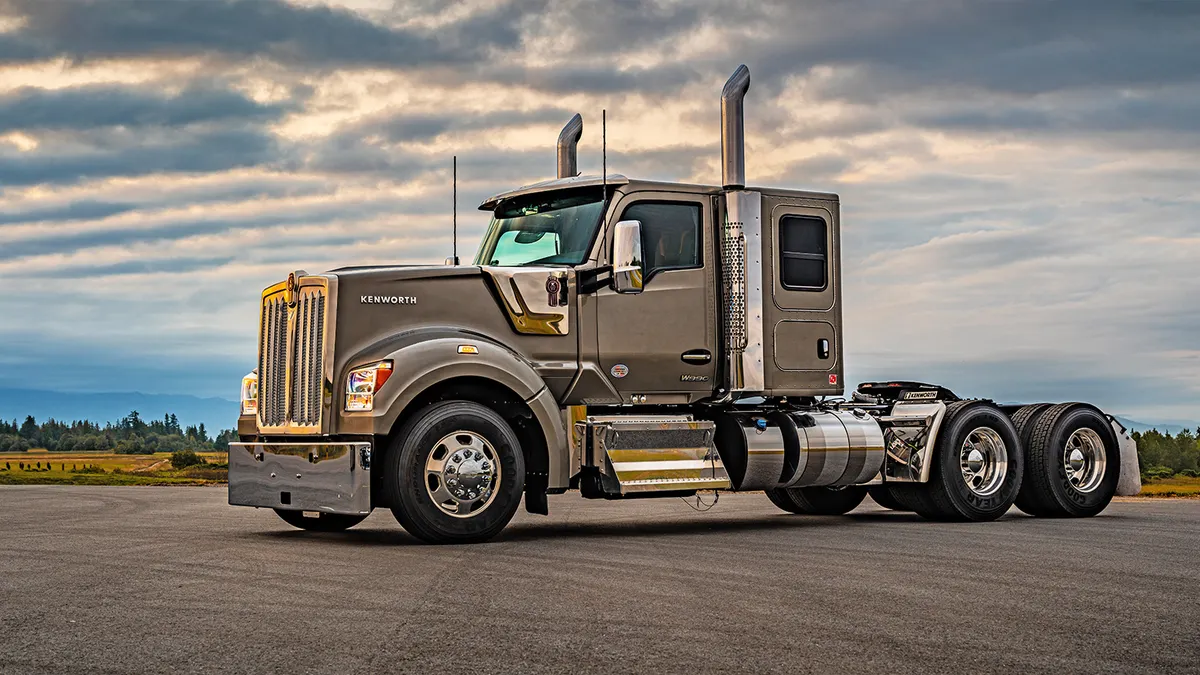Dive Brief:
- Trucking firms aren’t pre-buying trucks ahead of tariff and emission changes, according to Paccar CEO Preston Feight, speaking on a Q1 earnings call. He added that customers are not “buying the trucks off a lot because we're really building trucks for customers, so they have a customer name on them.”
- The truck manufacturer delivered 40,100 units in Q1, a drop from 48,100 units in the same period a year ago, according to a company investor presentation. “The North American truck market is being affected by uncertain economic conditions and the overall impact of new tariffs,” Feight said on the call.
- Feight told analysts customers are trying to discern what their buying pattern should be and what the tariff policies will be. “They're kind of contemplative of that, and it's affecting some people's buying patterns,” he added.
Dive Insight:
As trucking companies make decisions about their truck purchases amid economic uncertainty and tariffs, Paccar “is really well positioned,” with its footprint in North America, according to Feight.
Paccar has a Peterbilt factory in Denton, Texas, a Kenworth plant in Chillicothe, Ohio, and a Renton, Washington plant. Paccar considers those locations as the principal three Class 8 truck plants that it uses for U.S. production, according to Feight.
“We are an American company that builds our trucks in the markets for the markets,” Feight said. Still, Paccar has components that come into those factories from suppliers in other countries and “we don't know how they would be affected” by tariffs, he said.
One looming regulation is the Section 232 investigation, which will assess imports of medium- and heavy-duty trucks and parts. The company is waiting to see the exact impact Section 232 tariffs will have on the business, but it does anticipate “meaningful impact” on a per truck basis in Q2 and beyond if new tariffs for trucks become applicable,” Feight said.
Paccar estimates U.S. and Canadian Class 8 market for 2025 to be in the range of 235,000 to 265,000 trucks, which is down from 250,000 to 280,000 forecasted back in January.













